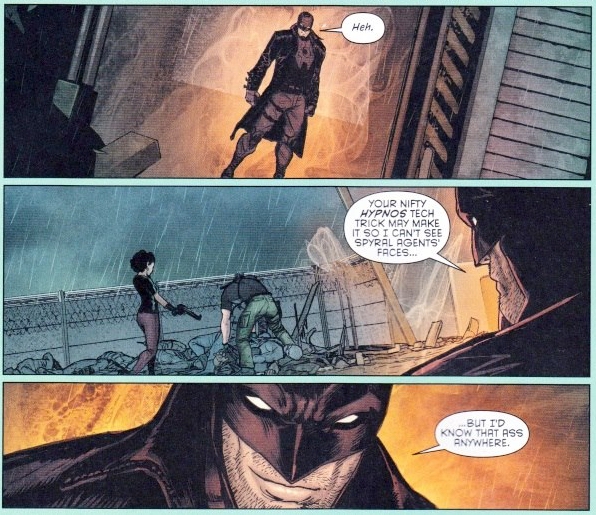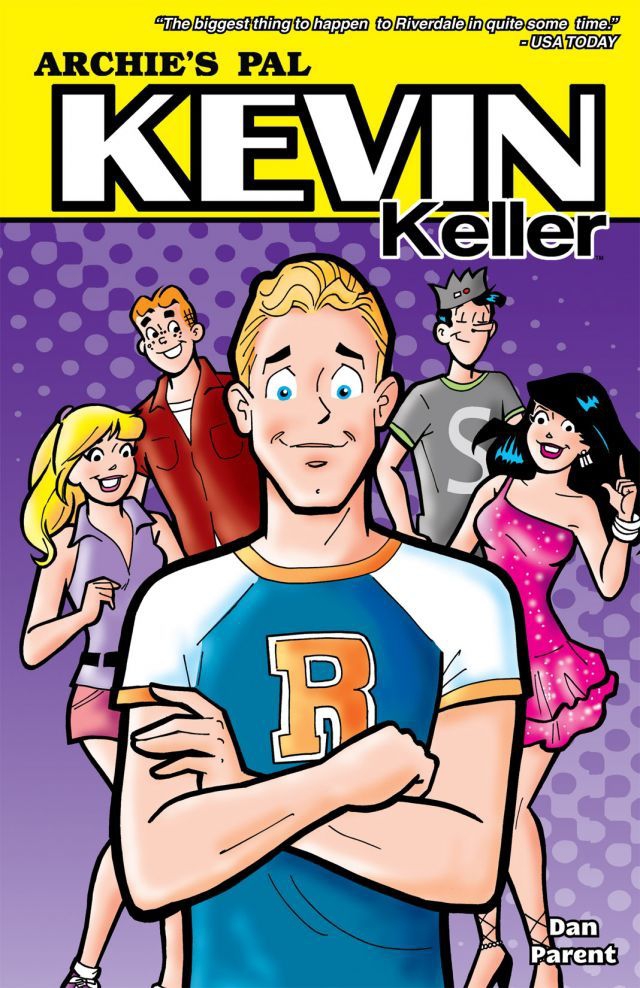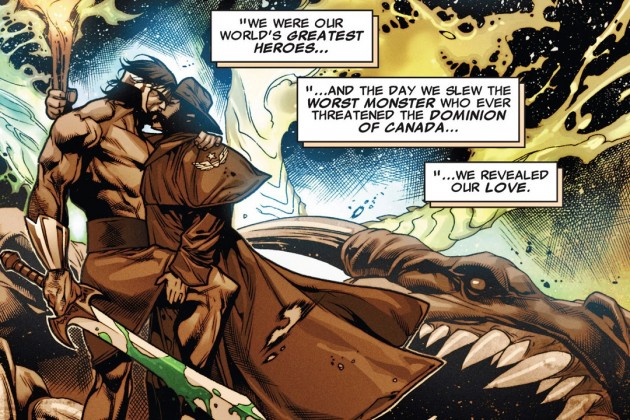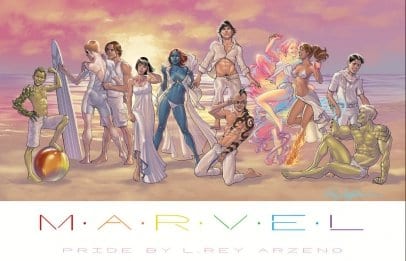Comic books aren’t typically this blog’s beat (32 pages? Give us 320!) but the giant glorious nerd-a-thon that is FanExpo hits Toronto this weekend (check out our coverage of last year’s happenings) and there’s a lot more rainbows in the word-balloon world lately so let’s take a tour:
 DC Comics just launched their first book starring an out gay superhero and The Midnighter has again raised eyebrows with a panel from its upcoming fourth issue in which former Batman sidekick Dick Grayson joins him for a steam. As DC joked on their corporate Instagram account, “Grayson and Midnighter walk into a steam bath and, presumably, launch a thousand Tumblr posts,” and in an interview with comics writer Donna Dickens, The Midnighter writer Steve Orlando says this ongoing homoeroticism between them is deliberate.
DC Comics just launched their first book starring an out gay superhero and The Midnighter has again raised eyebrows with a panel from its upcoming fourth issue in which former Batman sidekick Dick Grayson joins him for a steam. As DC joked on their corporate Instagram account, “Grayson and Midnighter walk into a steam bath and, presumably, launch a thousand Tumblr posts,” and in an interview with comics writer Donna Dickens, The Midnighter writer Steve Orlando says this ongoing homoeroticism between them is deliberate.
“There are plenty of books that have a certain type of male gaze and it’s exciting to update that. Tim Seeley and Tom King started it in Grayson and it’s something I think is great. It’s bold and unapologetic but it’s fun. And it’s an exciting friendly competition as Tim, Tom and I try to outdo each other with flirtation and innuendo between Midnighter and Grayson!”
 Meanwhile, DC Comics has several other supporting queer characters, recently confirmed that Catwoman loves women as much as she loves Batman, and had Wonder Woman officiate a lesbian wedding. Considering the explosion of queer indie comics (nicely sampled in the award-winning anthology QU33R), it’s about time the mainstream comics companies caught up. Even the forever-1950s Archie gang welcomed a gay teen to Riverdale years ago.
Meanwhile, DC Comics has several other supporting queer characters, recently confirmed that Catwoman loves women as much as she loves Batman, and had Wonder Woman officiate a lesbian wedding. Considering the explosion of queer indie comics (nicely sampled in the award-winning anthology QU33R), it’s about time the mainstream comics companies caught up. Even the forever-1950s Archie gang welcomed a gay teen to Riverdale years ago.
We’ve reached the point where newspapers ask, “Are the straight white male superhero’s days numbered?” and while the answer is no, of course not, there are the typical signs that any progress on queer visibility will be met with resistance. Over at Marvel Comics — currently being lauded for their push on diversity with a black Captain America, a female Thor and a Muslim-American Ms Marvel — there’s a strange new hesitancy around some of their queer characters.

The Norse trickster god Loki, brother of Thor and villain in the first Avengers movie, was always presented as a fluid character in terms of gender and sexuality but writer Al Ewing’s desire to play with all that (like Orlando in his Midnighter book) seems to have been squashed by Marvel execs. And if you want Channing Tatum to play a bisexual Gambit in his upcoming movie? Well, put that idea out of your head right now.
In a blistering editorial, Comics Alliance’s Andrew Wheeler (your best source for writing about comics and queer characters) challenged a Marvel editor’s squeamishness about a legendary character’s bisexuality. While an alternate-universe Hercules found love with Canada’s own Wolverine a couple years back, the character is now seen as having been “straightwashed.” As Wheeler notes, “Right now, Marvel’s best days as a publisher of queer-friendly comics are definitely in the past.”
With mainstream comics, much like Hollywood films, it seems it’s always a two-step-forward, one-step-back scenario. Even the now-more-progressive DC recently stumbled with its Justice League 3001 book that revealed that, one thousand years from now, we’ll still be just as shitty towards trans people. What’s changed, however, from the days of gay men attempting to rape the Hulk (seriously!) is that queer comic creators and fans are getting ever more established and vocal, demanding that a medium we’ve loved for decades start loving us back. You’ll see lots of us at FanExpo this weekend as universes collide in glorious glossy-paper colour.


 Why you can trust Xtra
Why you can trust Xtra


